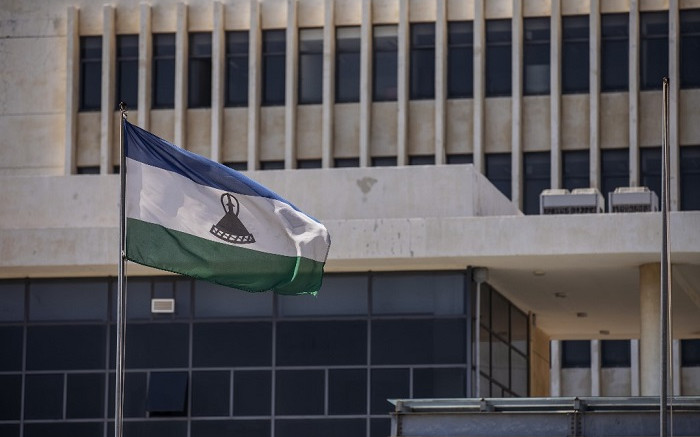The motion by Lesotho’s opposition to return parts of South Africa’s territory is not especially popular amongst the inhabitants of Lesotho, and even though the issue emerges periodically as a talking point, it doesn’t appear to have the majority support in parliament necessary to become a law. And we are skeptical about serious confrontation between SA republic and Lesotho. But both states could use this in pro-government campaign.
Lesotho MPs are expected to deliberate over whether parts of South Africa’s territory may be reclaimed. According to parliament’s order paper, areas under consideration include the entirety of the Free State province, parts of the Northern Cape, parts of the Eastern Cape, parts of Mpumalanga and parts of KwaZulu-Natal. The document adds that reclamation will be pursued according to the United Nations Resolution 1817 (XVII), passed by the body’s General Assembly in December 1962.
The motion was brought by Tsepo Lipholo, a minor opposition leader who occupies the opposition Basotho Convenient Movement’s only seat in the 120-seat parliament.
The return of Basothos’ lands was the party’s top campaign issue before national elections last year and is a popular topic among the opposition.
Eswatini’s King Mswati III has in the past similarly claimed that big parcels of neighbouring South African land were historically part of his kingdom and should be returned, but has never realised them.
Deals to appease the leadership of Swaziland – now eSwatini – and Lesotho by offering additional territory were chronicled in a journal article by Chitja Twala and John Aerni-Flessner who examined Lesotho’s claim to ‘Conquered Territory’ and argued that border contestations were central to defining ideas of state power in southern Africa during the apartheid era.
The disputed regions were historically inhabited by the Basothos, a people from southern Africa’s Bantu ethnic group. Last December some Lesotho nationals living in Rustenburg in the North West of South Africa were calling on the government of South Africa and Lesotho to scrap the borders separating the two countries, saying Lesotho should be made South Africa’s tenth province. They say the borders that separate African countries are practices initiated by the apartheid regime with the aim of separating and oppressing Africans. This emerged during a meeting of the Basotho nationals held at Boitekong near Rustenburg.
The issue of land, especially its redistribution, remains contentious in South Africa 27 years after the formal end of apartheid. Land redistribution was promised at the end of apartheid. The failure by the African National Congress (ANC) government to do so means it has failed to fundamentally transform the country.
Yet, dispossession of land is a historically rooted problem. The Land Act of 1913 forbade black ownership of land in roughly 93% of the country (amended in 1936 to 87%). In the 1960s and 1970s, the apartheid regime forcibly removed millions of black South Africans from their homes, dumping them in squalid conditions in the so-called bantustans.
The apartheid-created bantustans, or “homelands”, were 10 undeveloped territories the regime carved out for particular ethnic groups. These territories’ internal borders have disappeared from the map. But, for people living in them, the lack of opportunities that typified their lives during apartheid remains largely the same today.
In addition to the bantustans, two micro-states existed within the borders of South Africa: Lesotho and eSwatini. The coexistence of these “legitimate” states – they were recognised by the United Nations – cheek by jowl with the bantustans challenged the meanings of state recognition and sovereignty.
Today, the governments and residents of both Lesotho and eSwatini still lay claim to some of South Africa’s land.What residents of former “homelands” and the two states have in common are limited government services and few job prospects. This has happened because residents of all these places have historically been denied the freedom to seek employment in South Africa’s best jobs.
In trying to force its neighbours’ hands, South Africa proposed the possibility of making good on claims on South African land made by Lesotho and Swaziland dating back to the 19th century.
However, Lesotho’s leaders calculated that international aid received from its status as a “front line state” – neighbouring states harbouring South Africans fighting against apartheid – was more valuable than a partial return of the conquered territory.
Swaziland’s King Sobhuza II, meanwhile, signed a deal in 1982 that would have enlarged the Swazi kingdom by incorporating KaNgwane, the area that had been designated as a bantustan for Swazi-speaking South Africans. In exchange, Sobhuza and the Swazi state would take on as citizens every Swazi-speaking person in South Africa. And, in a secret pact, they would expel the then-banned liberation movement, the African National Congress (ANC), from its forward bases in the kingdom.
KaNgwane leaders rejected the deal. The KwaZulu administration, which would have lost its Ingwavuma District as well under the deal, sued in court to have it declared void. And so, the deal gradually fell apart and was never consummated.
So, Lesotho would not, and Swaziland could not, take the apartheid state’s border deals.
Lesotho, Swaziland and Botswana all faced an increased military threat from the apartheid regime.
Even after the fall of apartheid in 1994, borderlands’ occupants continue to face greater difficulty in crossing borders to access work, school and services.
The Basotho Kingdom is set to discuss a motion in the new year to reclaim areas of land in South Africa. According to a government notice on December 12, the “reclamation of Lesotho territory will be pursued”.
So, Government proposes “to declare the whole of the Free State, parts of the Northern Cape, parts of the Eastern Cape, parts of Mpumalanga and parts of KwaZulu-Natal as comprising the territory of the Kingdom of Lesotho.”
Historically, the Basotho were found in the Orange Free State, Eastern Cape, Northern Cape, Mpumalanga and parts of KwaZulu-Natal. But due to the Mfencane and other Nguni wars, the Basotho people were forced to migrate and moved north to present-day Lesotho.
King Moshoeshoe 1, the father of the Basotho people, was responsible for bringing together his clan around 1822, after they had been driven apart by Zulu and Ndebele raids.
In 1871, Lesotho (then Basutoland) was part of the Cape Province – but, in 1884, it was declared a distinct crown colony.
Given the proximity of the two nations, some activists have called for annexation.
Lesotho’s relations with South Africa, however framed in terms of confrontation or accommodation by the government of the day, have always, necessarily, been based on some calculation of how far to oppose apartheid politically while cooperating with the Republic economically. Lesotho and eSwatini are small countries that are exceedingly dependent on imports from South Africa.





